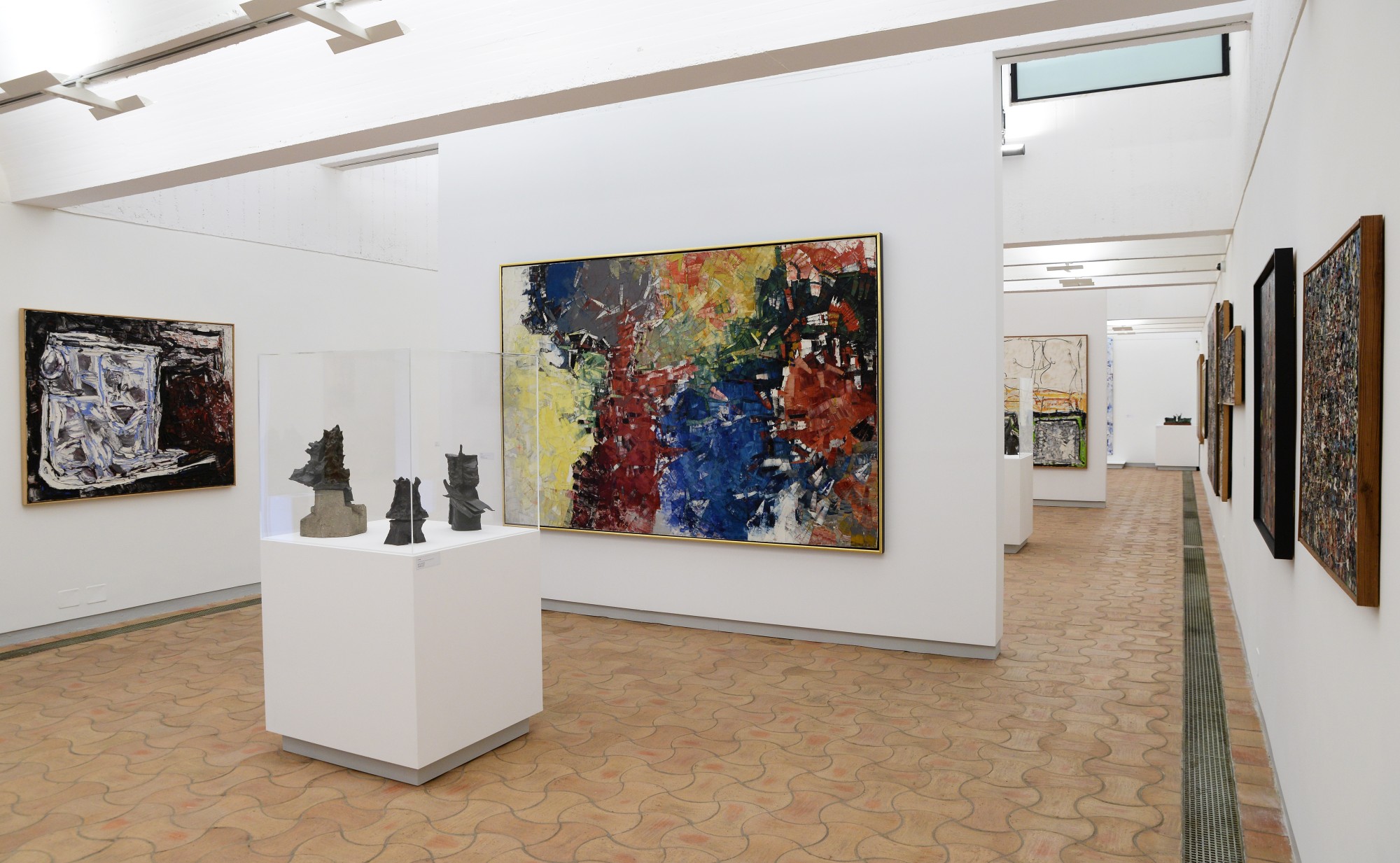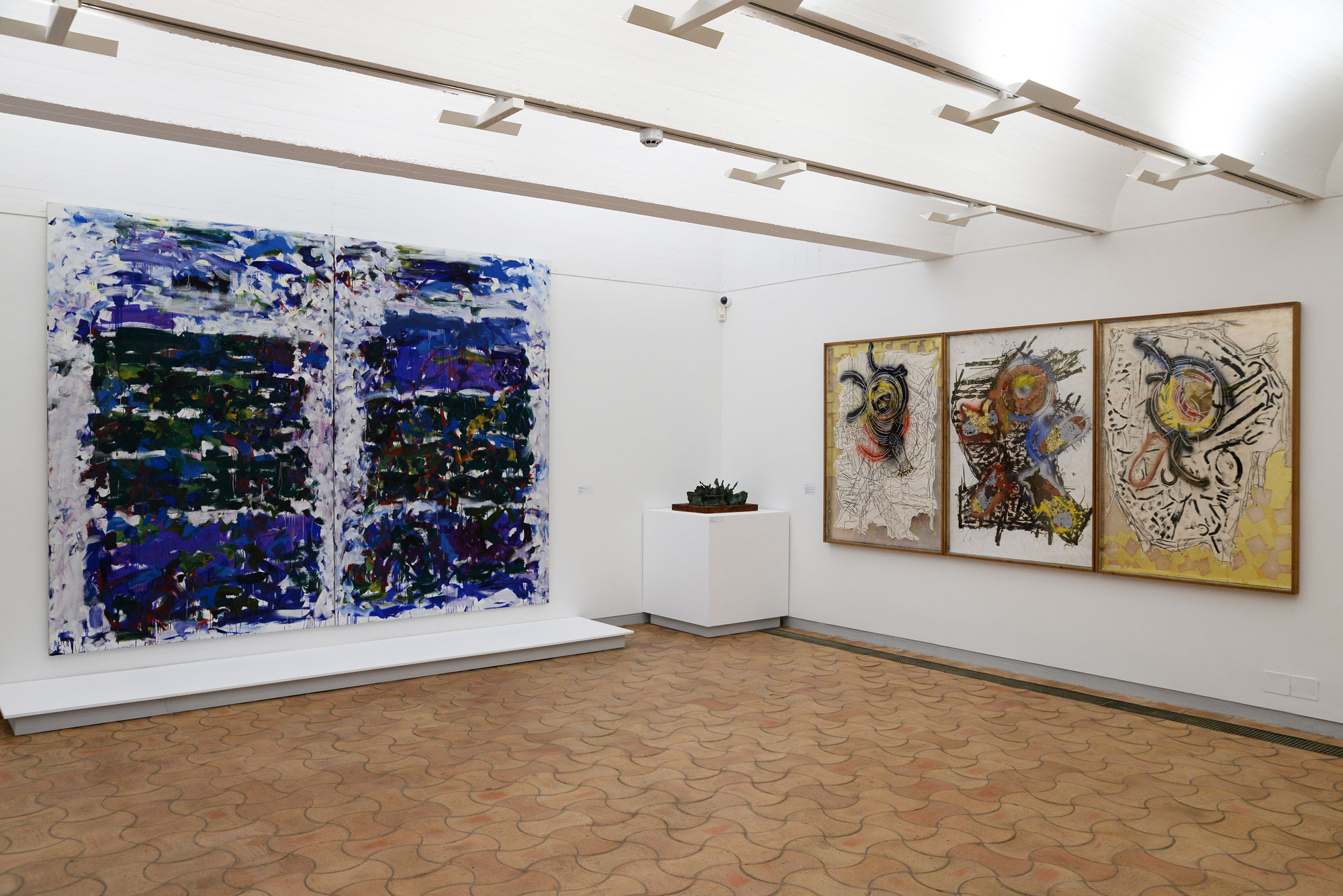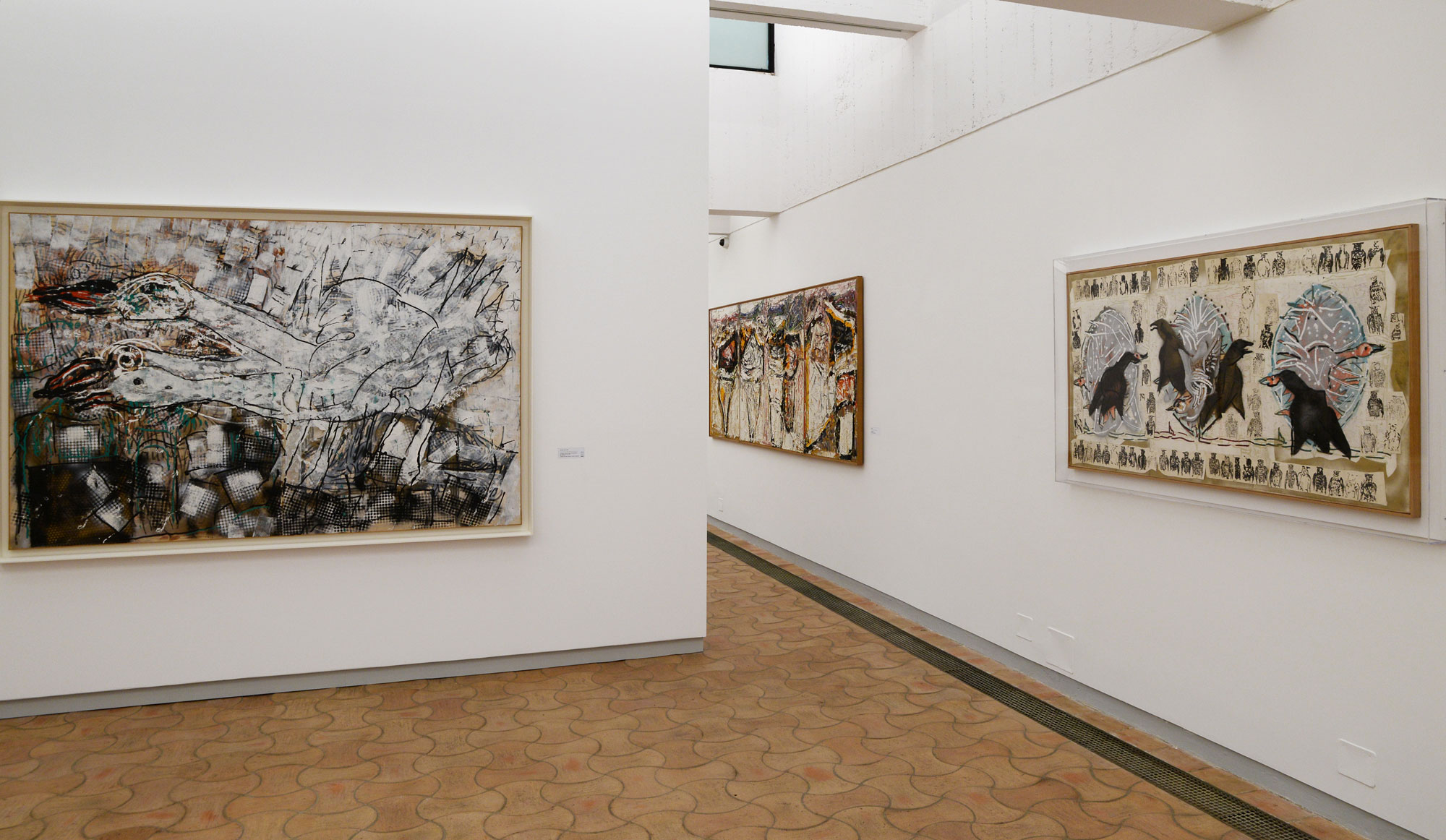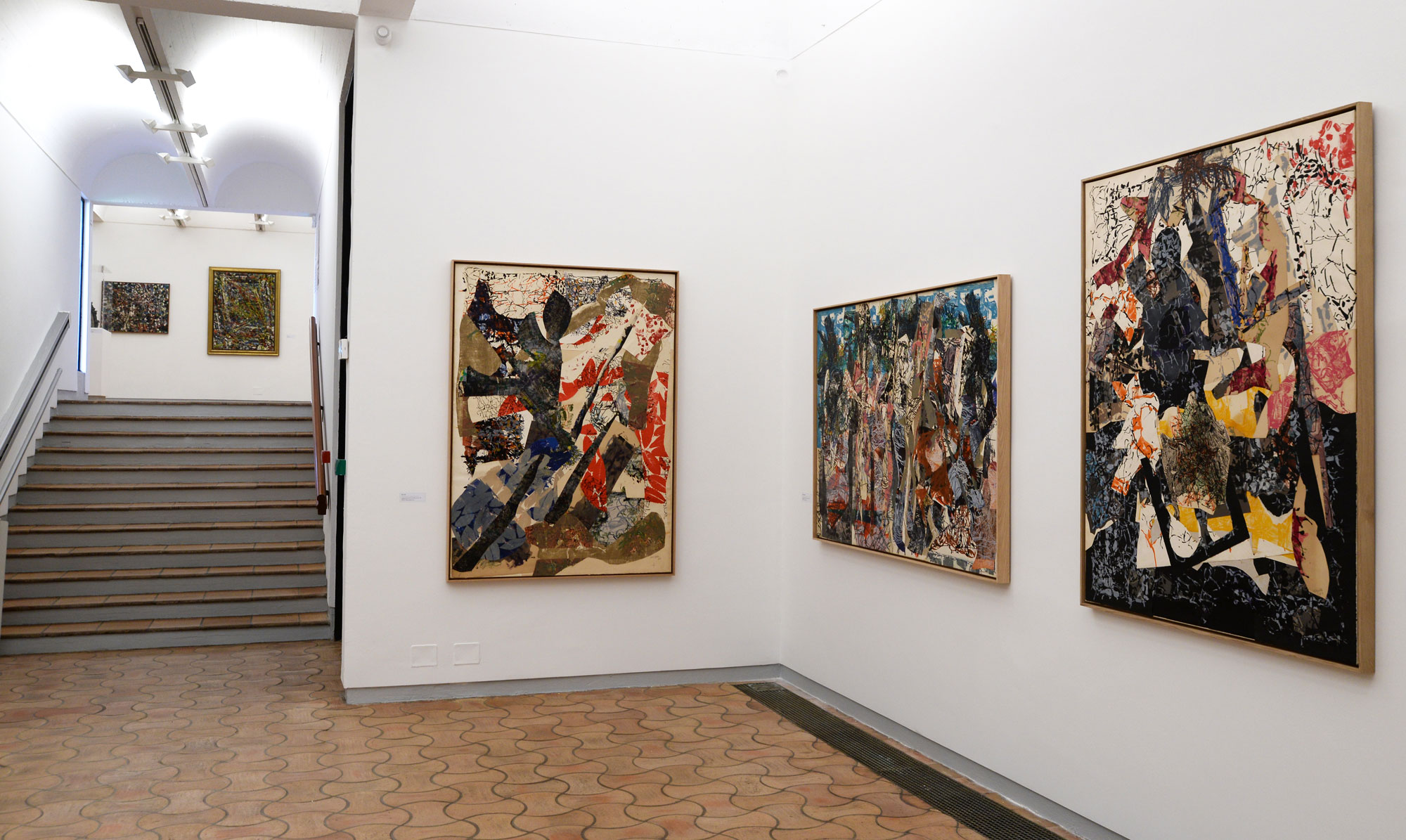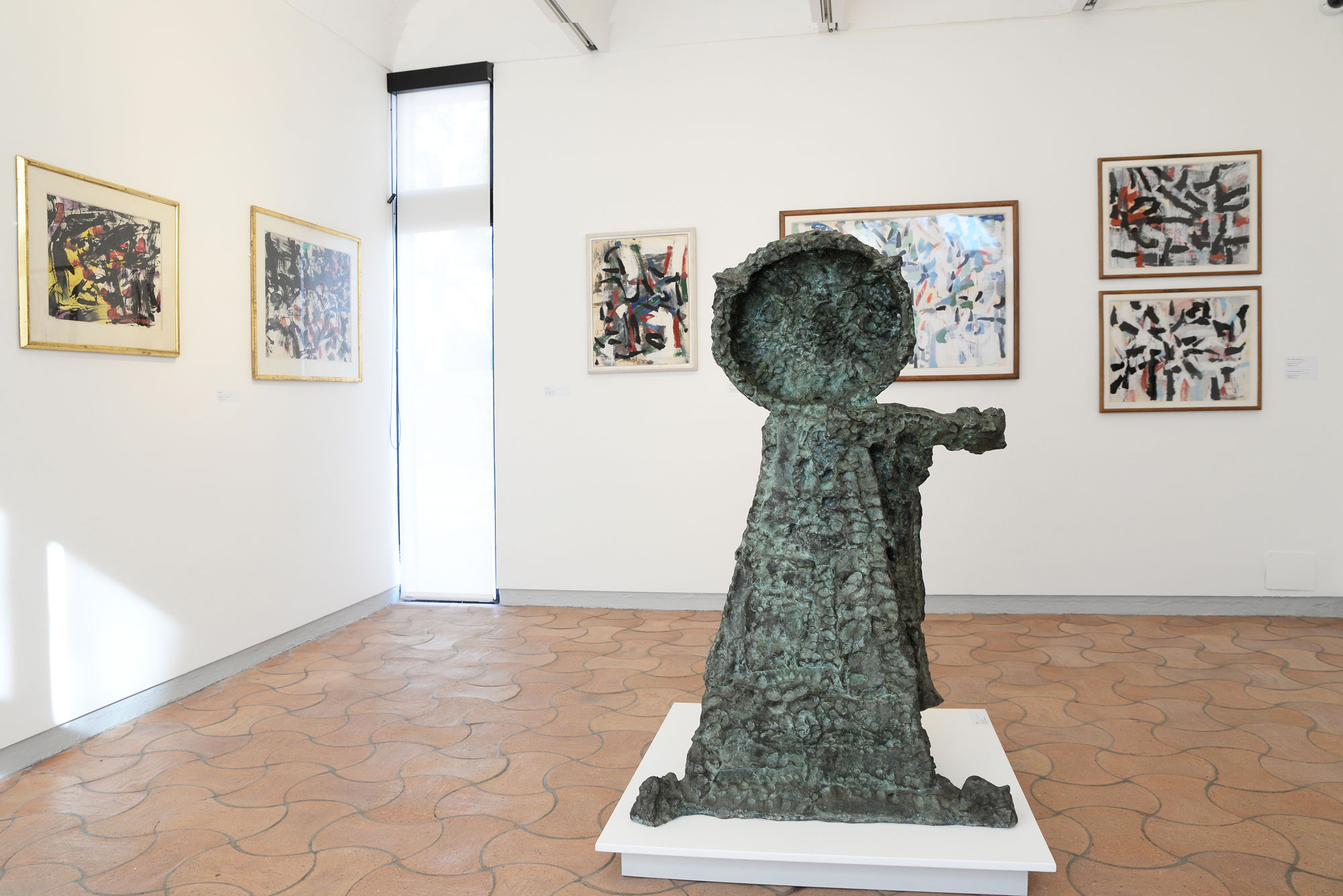1. My friends' friends...
It was André Breton who introduced Jean-Paul Riopelle to Aimé Maeght in 1947, as soon as he arrived in France, even before he met Joan Mitchell. Riopelle also became very close to Maeght's son, Adrien, and shared the family's large gatherings of artists, actresses and actors in the south of France, as well as outings to sea on his boat. He was also galvanized by Breton's personal collection of Inuit masks, from which he drew inspiration for the Rois de Thulé series.
2. An exhibition is born
"Is he younger or older than me?" This innocent question about Riopelle was asked by Adrien Maeght to his daughter Isabelle at the end of a meal three years ago. It was when Adrien realized that the centenary of his friend's birth was approaching that he exclaimed, "We absolutely have to do something!"
3. A family story...
The exhibition's curator, Yseult Riopelle, is also the artist's daughter. In 1966, she danced with Merce Cunningham's troupe at the Fondation, during the American choreographer's first performance in France. One day, during a work session, Yseult brings along sketchbooks containing set designs inspired by Cunningham's performance, which Riopelle drew in 1967. The curatorial team was so enthusiastic that we decided to bring them to life through a collaboration with the Pavillon Bosio and dancer Noé Soulier.
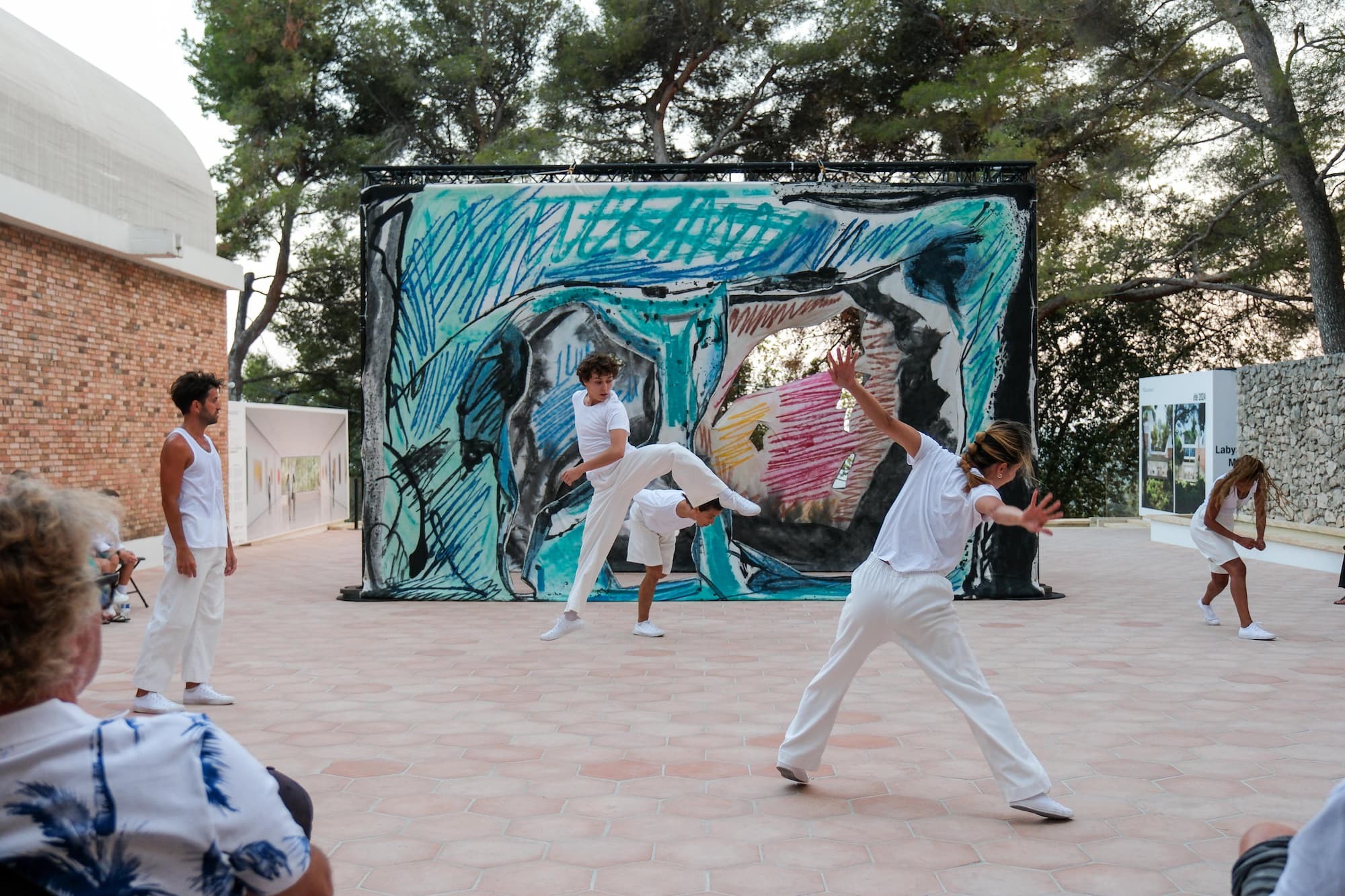
4. The "life-size" work
Chevreuse (301 x 391 cm) est le plus grand tableau de Riopelle, acquis par le Centre Pompidou en 1960. Le conservateur du musée, Claude Schweisguth, décrit l'artiste comme celui qui peignait “la sensation physique qu’on éprouve au contact de la nature”. Il n’avait pas été exposé depuis au moins dix ans avant cette exposition à la fondation Maeght.
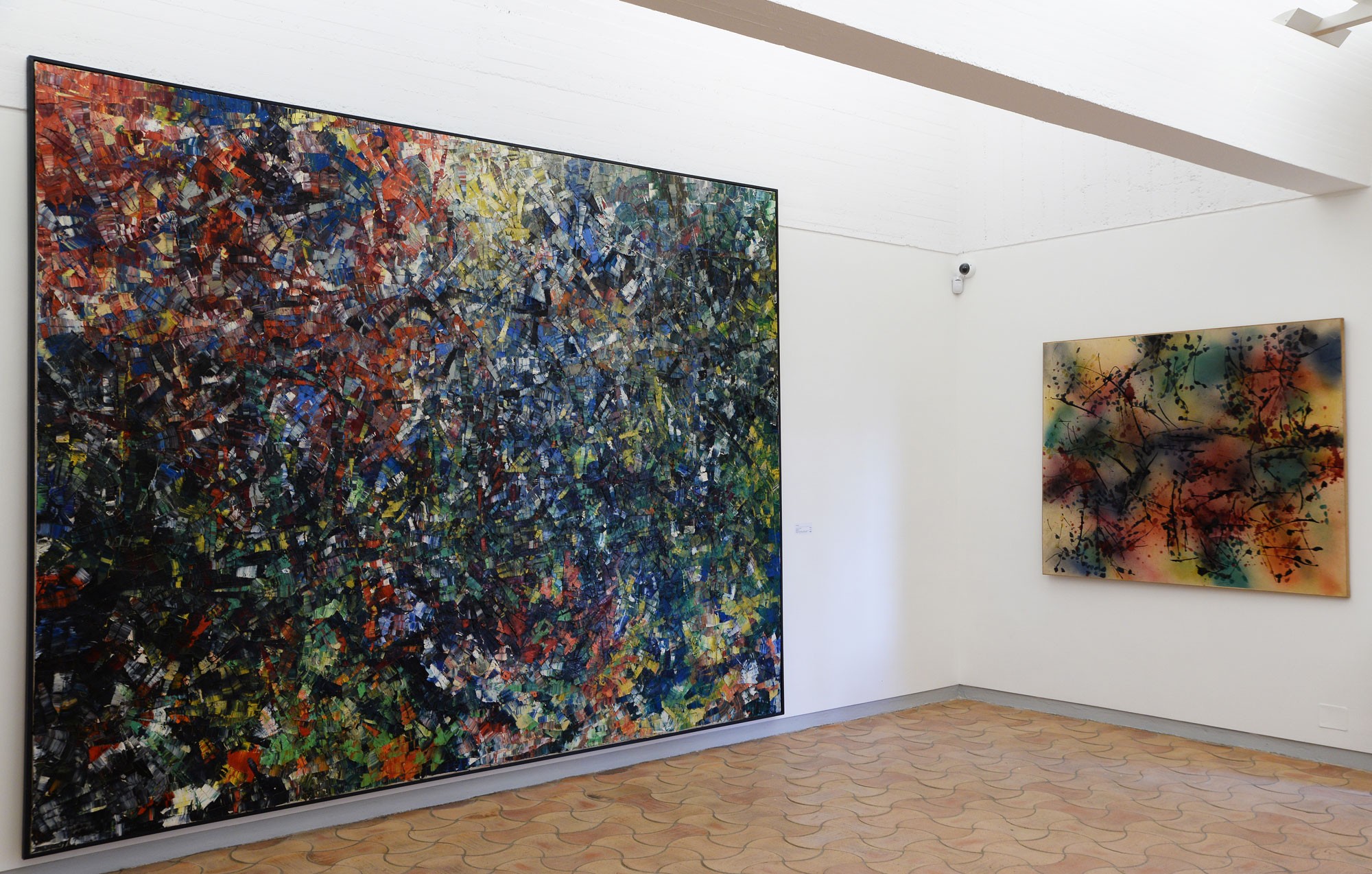
5. Unique pieces
Riopelle hated publishing. Despite this, he developed a passion for the lithographic press the Maeghts had built for Miró, even working on it at night after the employees had left. However, he was to hijack its use, creating unique works by reworking the pieces with drawing and collage.
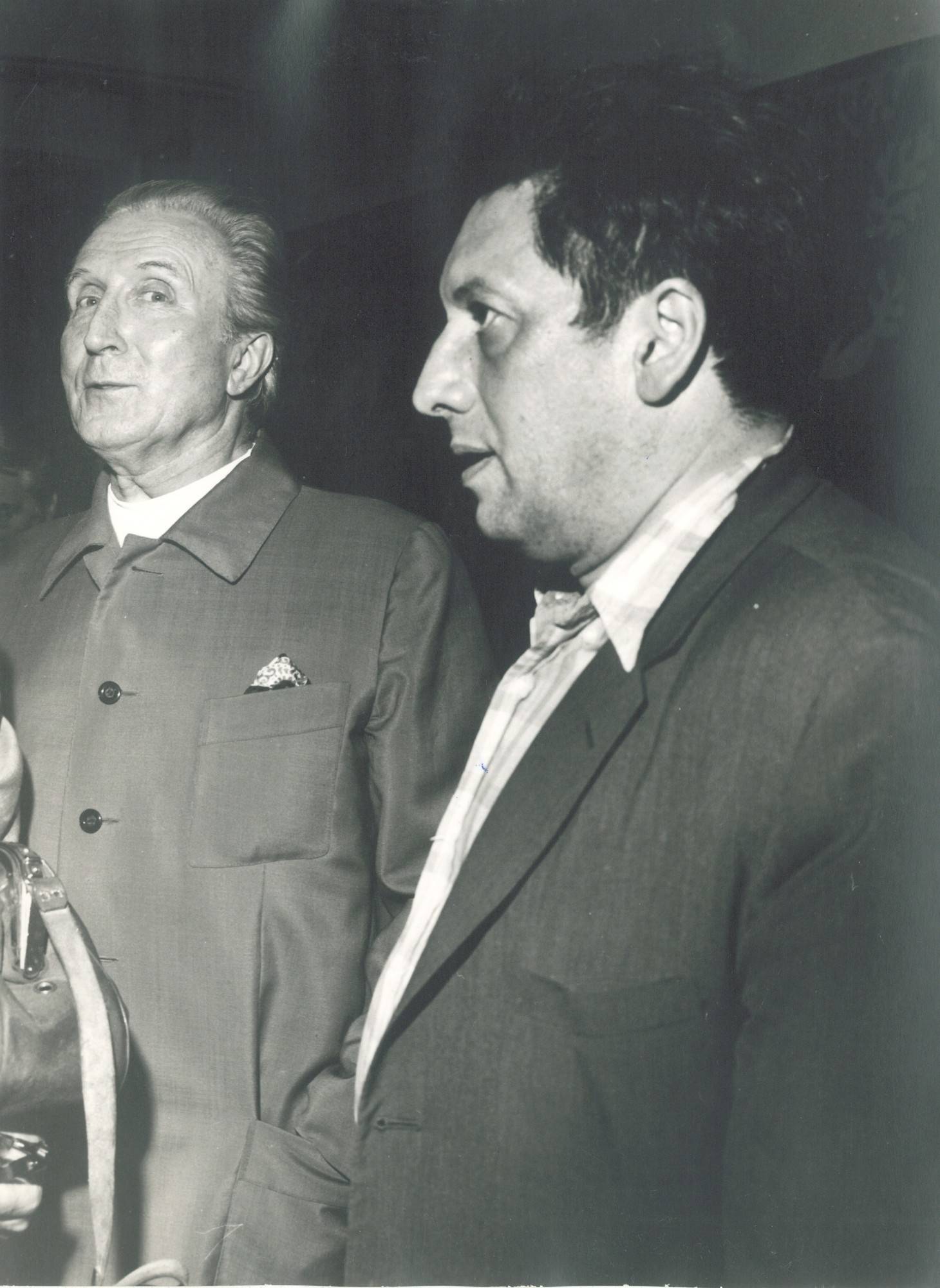
Parfums d’ateliers, Jean Paul Riopelle. Fondation Maeght, Saint-Paul-de-Vence → 12.11.23
